British reptiles list, including all of Britain’s native reptiles. Part of our reptiles section: Reptiles: The Ultimate Guide.
Only six species of reptile – three snakes and three lizards – are native to Britain. A small number of introduced species is also present in the UK. These are mainly small colonies started by escaped pets or zoo exhibits.
Additionally, five sea turtle species (Leatherback, Loggerhead, Green, Hawksbill, Kemp's ridley) are known to forage in British waters, but are rarely encountered. (You can find out more about sea turtles here: Sea Turtles: The Ultimate Guide)
On this page you’ll find a list of all of Britain’s reptiles (including introduced species), with pictures and facts.
British Lizards
Common Lizard
- Scientific Name: Zootoca vivipara
- International Conservation Status: Least Concern
- Where Found in Britain: Much of Britain and Ireland
The common lizard is Britain’s most common reptile. It is found throughout much of Britain, and is the only reptile found in Ireland.
This small lizard ranges in colour from grey to black, but is usually mid-brown. The skin is patterned with lines and spots. These are both darker and lighter than the background skin colour. The undersides of the male can be white, yellow or red.
The usual length of a common lizard is between 10 and 15 cm (4 and 6 in.)
The common lizard is found in a variety of (often dry) habitats, including heaths, moors and near sea cliffs.
Unlike most reptiles, females give birth rather than laying eggs. The eggs form and hatch inside the female. This process is known as viviparity – hence the lizard’s alternative name of viviparous lizard.
The common lizard is able to shed its tail in order to escape from predators. It is often seen with either part, or all, of its tail missing.
A predator itself, the common lizard feeds on insects and spiders.
Sand Lizard
- Scientific Name: Lacerta agilis
- International Conservation Status: Least Concern
- Where Found in Britain: Sand dunes and heathlands in Southern and north-western England and Wales
The sand lizard is a sandy-brown colour. The male is green along the sides, and is particularly colourful during the breeding season. Both sexes are patterned with a series of small circle markings. The sand lizard can reach a length of around 25 cm (10 in).
The sand lizard lives in heathlands with sandy soil, or in sand dunes. It can often be seen basking on the sand. The female lays eggs in the sand.
The species is only found in a small number of areas in Britain. These include sandy heathlands in Dorset, Hampshire and the Hampshire-Surrey borders, and sand dunes in South Lancashire and Wales.
The sand lizard feeds on insects and spiders.
Slow-Worm
- Scientific Name: Anguis fragilis
- International Conservation Status: Least Concern
- Where Found in Britain: Found throughout much of Britain. Not found in Ireland or many Scottish islands.
Although it’s called a ‘worm’, and looks like a snake, the slow-worm is actually a legless lizard. It is brown-grey in colour. Its skin is ‘shiny’ and smooth and its scales do not overlap. Unlike a snake, a slow worm can blink.
Most slow worms are between 30 and 40 cm (11.8 and 15.7 in.) in length.
The slow worm is found in heathlands, woodland edges, hedgerows and gardens. It is unlikely to be found in areas in which domestic cats are present; cats are known to hunt and kill the species.
A slow-worm, like many lizards, can shed its tail to avoid predation.
The slow worm hibernates from October to March. The species is ovoviviparous: the eggs develop and hatch inside the female, who gives birth to live young.
The slow-worm is one of the longest-living reptiles. The species has been known to live at least 54 years in captivity, and may live for up to 30 years in the wild.
British Snakes
Adder
- Scientific Name: Vipera berus
- International Conservation Status: Least Concern
- Where Found in Britain: Widespread, but only locally common.
The adder is famous for being the only venomous snake found in Britain.
The adder has a squat appearance. It is grey / pale brown in colour, and easily identified by the zig zag marking that runs along the length of its back. Some individuals are red-brown or even black in colour.
The adder can reach lengths of up to 75 cm (30 in.), although most are significantly smaller than this.
The adder is found in heaths, moors and woodland edges. It hibernates in the winter, and is most active in spring, when mating occurs.
Although a bite from an adder can be painful, it is non-lethal to most healthy humans.
Barred Grass Snake
- Scientific Name: Natrix helvetica
- International Conservation Status: n/a
- Where Found in Britain: Widespread in England, Wales & Southern Scotland
Until recently, grass snakes in Britain were believed to be the same species as those found in Europe.
However, in August 2017, scientists announced that British grass snakes were actually a separate species, Natrix Helvetica – the barred grass snake, rather than the European Natrix natrix.
The barred grass snake is the largest snake found in Britain. It reaches a length of around 1 m (3.3 ft.). Its skin is grey / grey-green in colour with dark blotches along its back and sides. It has a pale yellow collar and black markings on its neck. The barred grass snake is greyer than the grass snake, which is greener.
The barred grass snake is typically found in grasslands and heaths, often near water. It is often seen swimming in water.
The barred grass snake is non-venomous. Common prey include frogs and toads.
The barred grass snake hibernates during the winter. Females lay clutches of leathery eggs in decaying vegetation and compost heaps.
Smooth Snake
- Scientific Name: Coronella austriaca
- International Conservation Status: Least Concern
- Where Found in Britain: Heathlands in Dorset, New Forest, N. Hampshire-Surrey borders. Re-introduced to West Sussex and Devon.
The smooth snake is Britain’s rarest reptile. It is found in similar habitats to that favoured by the sand lizard, namely sand dunes and sandy heathlands.
The smooth snake is brown-grey in colour. The head is marked with a dark patch that can resemble a crown. A dark stripe runs along each side of the head from the nostril to the neck. The snake has a dark pattern on its back.
The smooth snake can be distinguished from the similar-looking adder by its slender build and less-complete pattern.
The species reaches 50 to 60 cm (19.7 to 23.6 in.) in length.
The smooth snake is non-venomous. Like most reptiles, it is predatory. Its prey includes nestlings, other reptiles (including sand lizards and slow-worms) and insects. It subdues larger prey by constriction (i.e. it wraps itself around the body of its victim). Unlike true constrictors (such as the green anaconda and boa constrictor), it does not kill its prey with constriction.
The species hibernates from October to April. It is ovoviviparous, giving birth to live young.
Reptiles Introduced Into Britain
The following species are not native to Britain, and have been introduced by man.
Common Wall Lizard
- Scientific Name: Podarcis muralis
- International Conservation Status: Least Concern
- Where Found in Britain: Southern England
The common wall lizard is a small, slender lizard. It occurs in a variety of colours, from brown to grey-green. Its markings are also variable, and include lines and rows of spots.
The common wall lizard inhabits rocky and suburban habitats. It has been introduced in southern Britain.
Western Green Lizard
- Scientific Name: Lacerta bilineata
- International Conservation Status: Least Concern
- Where Found in Britain: Southern England, notably Poole Bay, Dorset
The western green lizard is a bright green lizard that can reach nose-tail lengths of 40cm (15.7 in). Males often have blue throats. Typical habitats include woodland edges and grasslands. An introduced population of western green lizards resides on the heaths and cliffs of parts of Dorset.
Aesculapian Snake
- Scientific Name: Zamenis longissimus
- International Conservation Status: Least Concern
- Where Found in Britain: Conwy, North Wales; Regent’s Park, London
Two introduced colonies of Aesculapian snake are found in Britain: one near the Welsh Mountain Zoo, near Conwy in North Wales; the other near the canal in Regent’s Park, London. Both are thought to have been established by escaped specimens.
The Aesculapian snake typically grows to 1.6 m (63 in) in length, although individuals can reach lengths of over 2 m (6.7 ft.). It occurs in a range of colours, including yellow-brown and green-brown. Its skin has a metallic, shiny appearance.
The species is non-venomous. It preys on mammals (typically rodents), birds and other reptiles. Unlike Britain’s native snakes, the Aesculapian snake is a good climber, and may be found in trees.
British Reptiles List: Conclusion
We hope that you have enjoyed meeting the reptiles of Britain. Although very few reptiles are present in the UK, each species is fascinating and Britain’s reptiles shouldn’t be overlooked!
- You can find out more about reptiles here: Reptiles: The Ultimate Guide
Discover amazing reptiles from all around the world:
- African Reptiles List with Pictures & Facts
- American Reptiles List with Pictures & Facts
- Australian Reptiles List with Pictures & Facts
- Rainforest Reptiles List with Pictures & Facts
Become an animal expert:
- Discover animals from all around the world: A to Z Animals

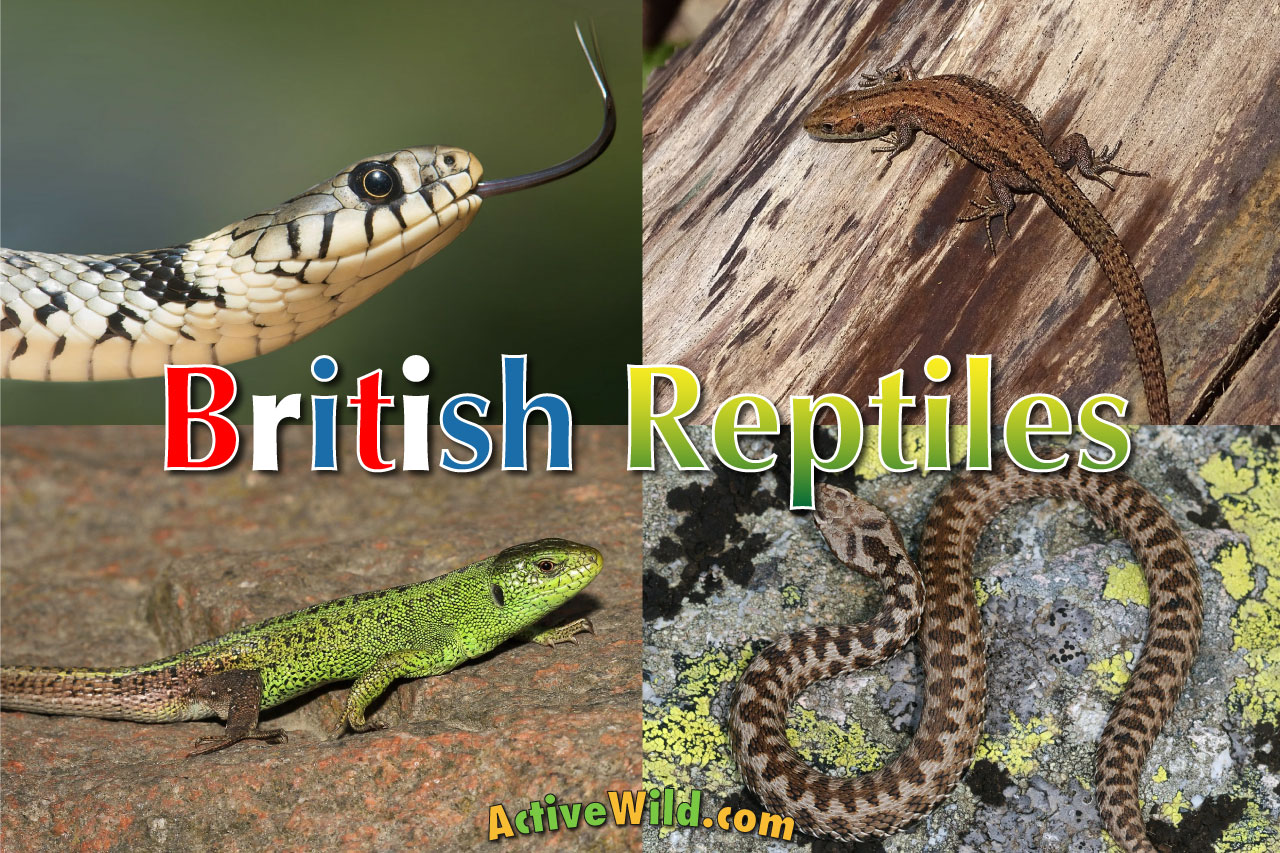
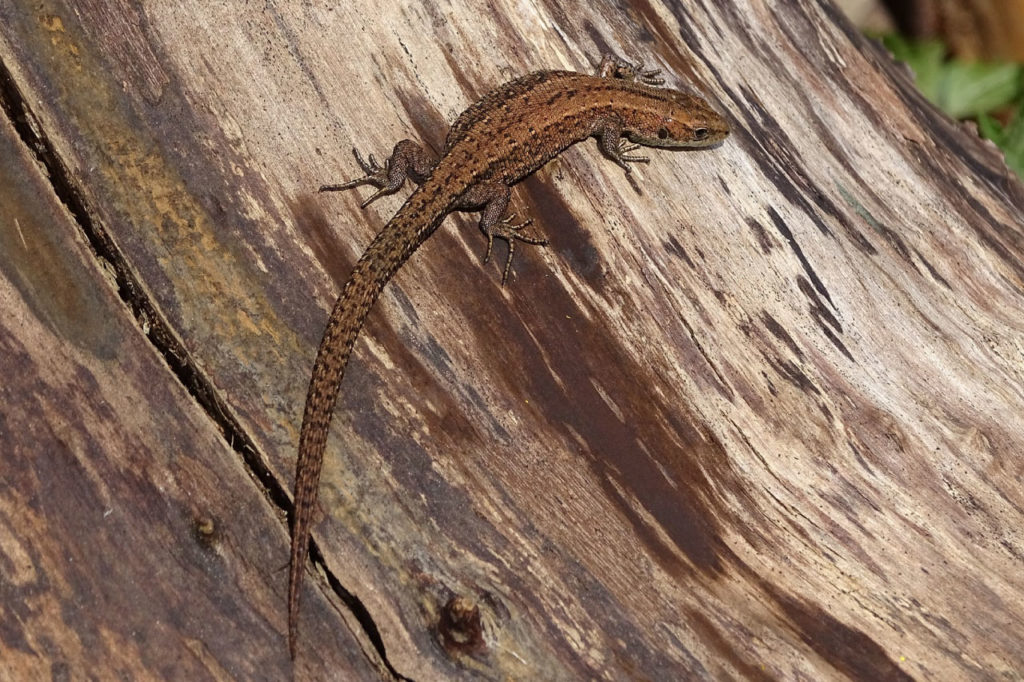
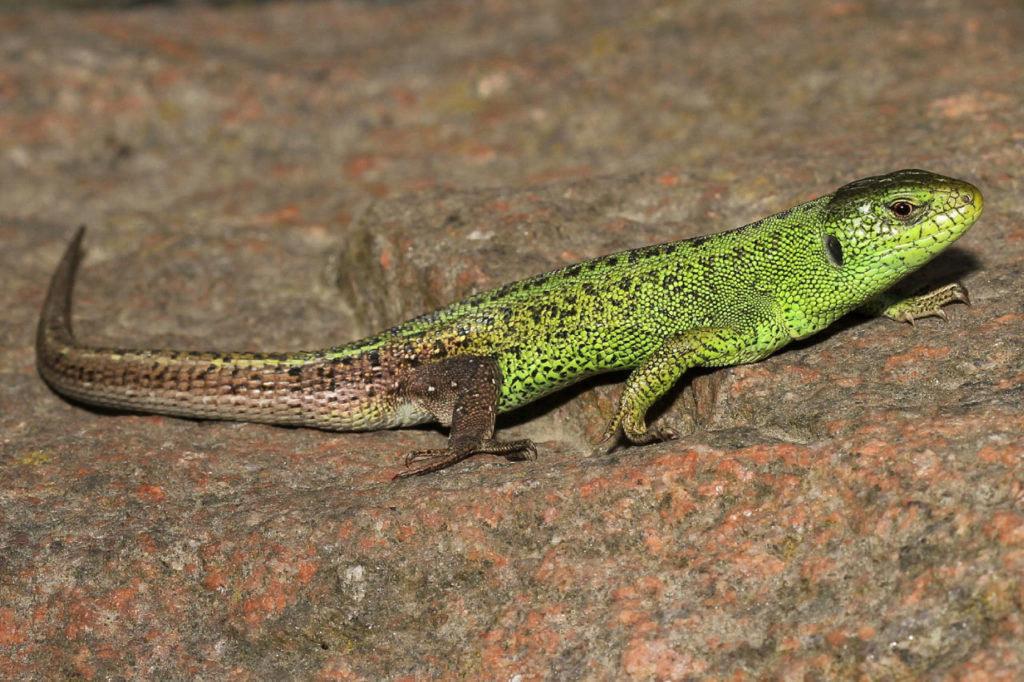
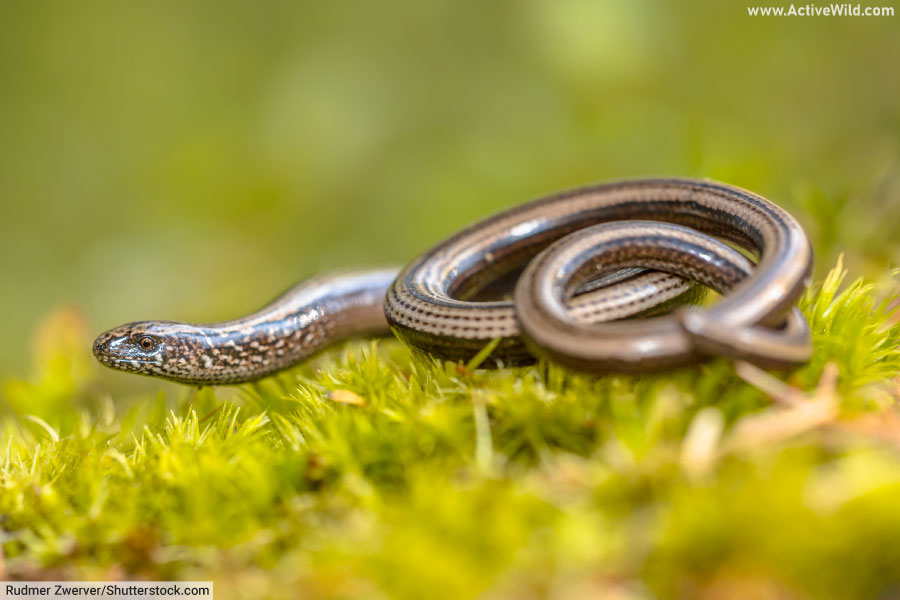
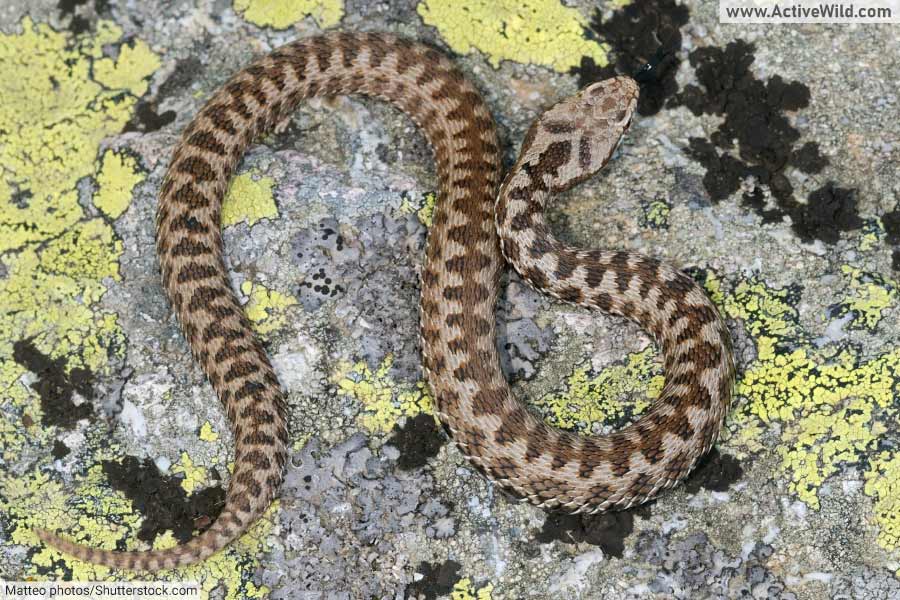
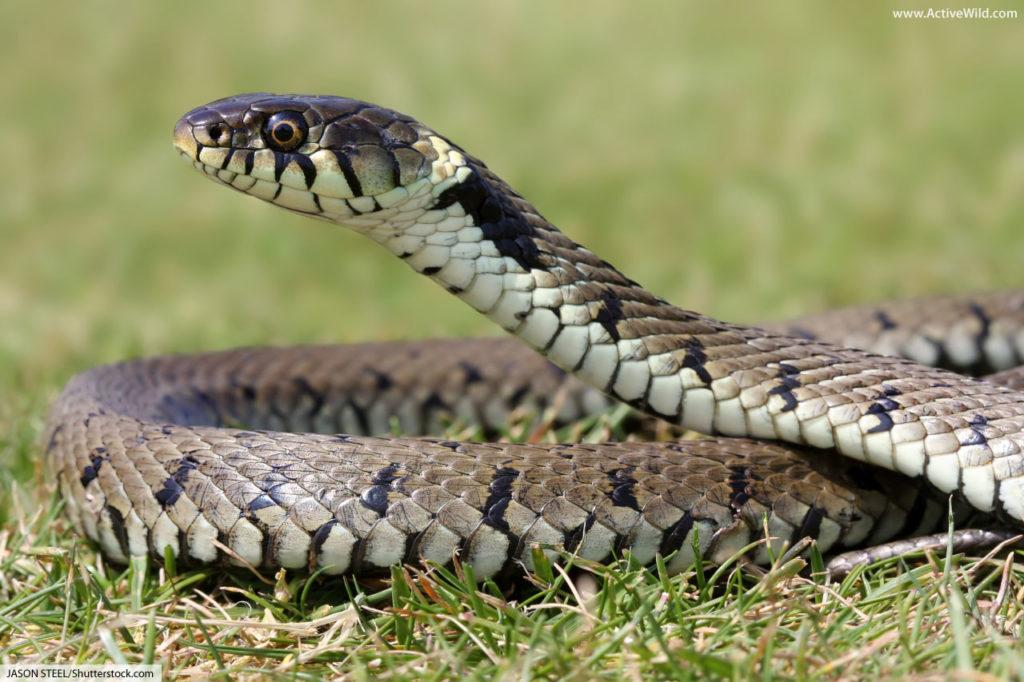
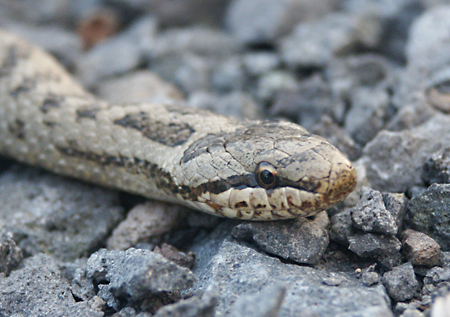
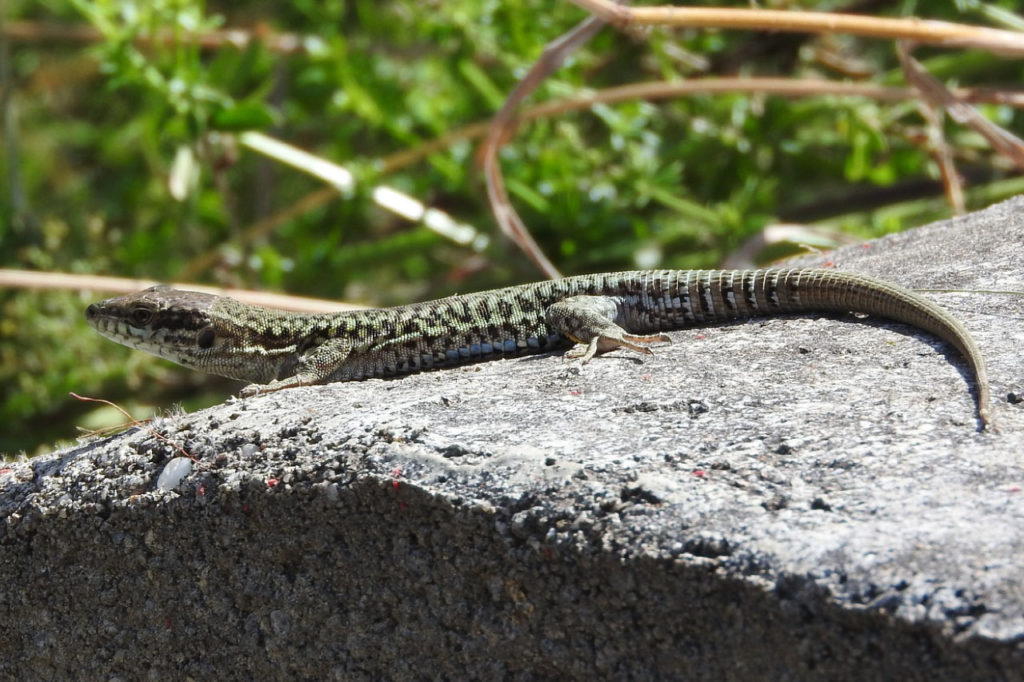
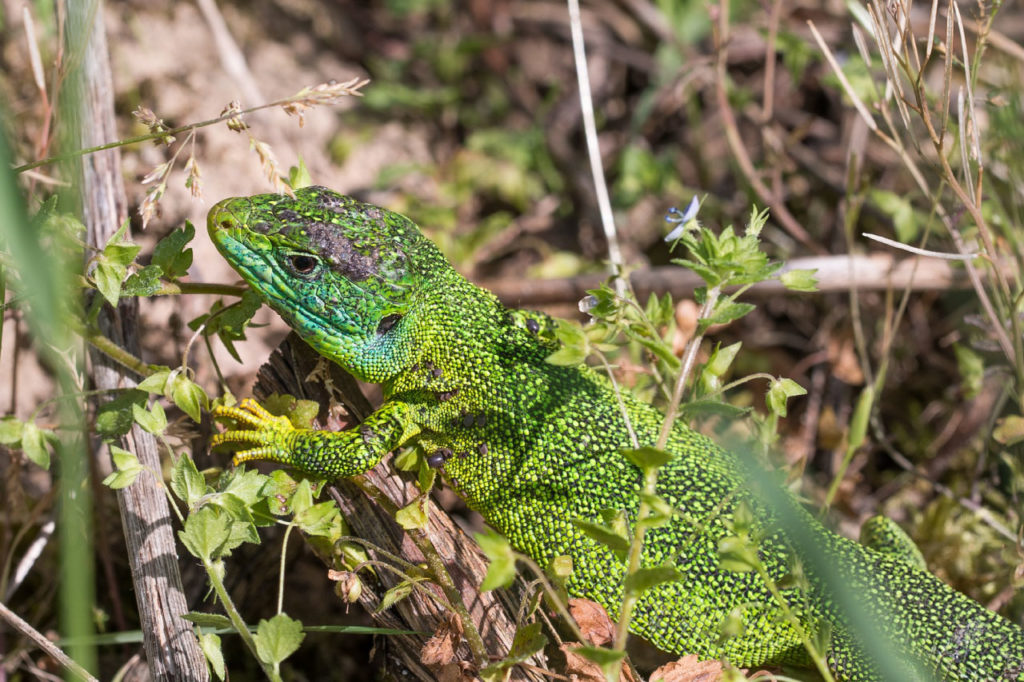
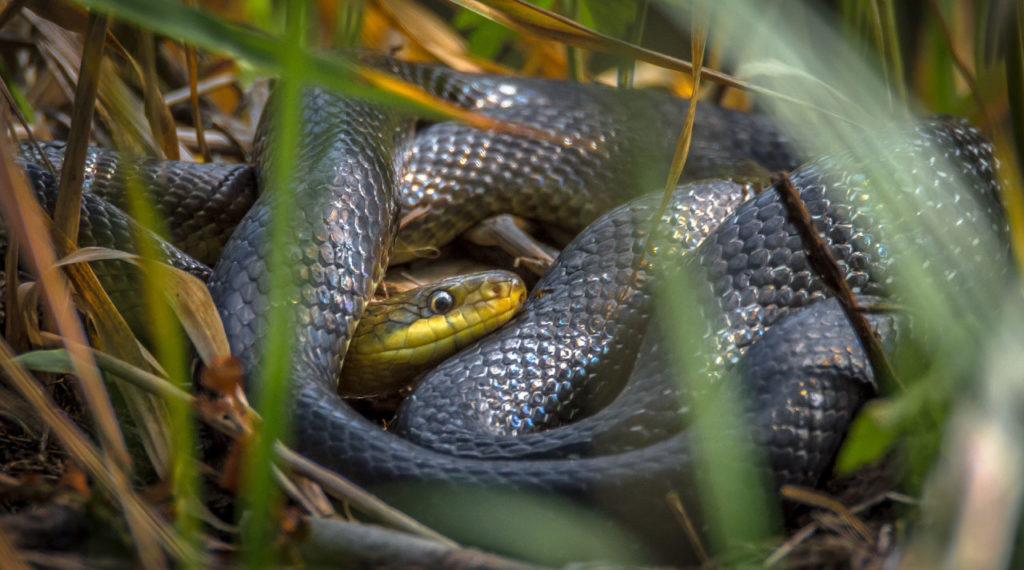

how many colour variations of slow-worm are there as I remember seeing a dark brown to black one and I can’t find any photo that represents the one I saw
thank you!
Andover, Hants, loam on chalk, seen 2 Sep 2021, 1540hr while gardening but unrecognised by me, cloudy, approx 18°c.
Dark green with lighter (yellowish) lateral stripes, 12cm long, 1-2cm wide, no feet seen but could be hidden. Head slightly bulbous with eyes on top. Two false eyes 1-2cm behind. Stunted tail (could be a victim of my spade). Didn’t move with me hovering. Moved 1m between sightings then disappeared completely.
Any clue please. Have 4 JPEGS I can send you.
Hi Roger,
Thank you for your comment, and apologies for the late reply.
From your description we’d be tempted to say common lizard, but it’s difficult to say for sure – markings and colour can be quite variable.
Could the false eyes have been ears (which are usually holes in the sides of a lizard’s head)?
We’d be happy to look at your photos, if you don’t mind us using them on the site.
(We’ve sent you a private message with our email address.)
Regards,
The Active Wild Team
I found a dead snake on a busy road it was bright yellow with black lines across about 2 feet long
what would it be please?
Hi Pat,
Thank you for your message. It doesn’t sound like a native species (assuming you’re from the UK); the closest in size / appearance would be a grass snake. I suspect it may have been an escaped pet. The colouration can be quite variable in snakes bred for the pet market; you may be better off asking a reptile dealer for an id.
Sorry we couldn’t help further.